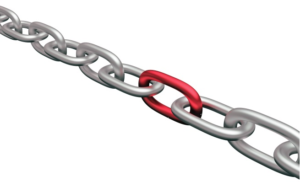 In the pharma & biotech industries, Critical Chain Project Management (CCPM) plans and manages projects by emphasizing the available resources—such as people, equipment, and facilities—that can be used to complete tasks.
In the pharma & biotech industries, Critical Chain Project Management (CCPM) plans and manages projects by emphasizing the available resources—such as people, equipment, and facilities—that can be used to complete tasks.
Deadlines are met by maximizing resource availability and flexibility, rather than focusing on rigid scheduling of individual tasks. Using CCPM provides more predictability and productivity, and also speeds up your project plans.
How CCPM Began
Developed in 1997 by Eliyahu M. Goldratt, CCPM is distinctly different from the traditional methods based on critical path and PERT algorithms, which are focused on task order and strict scheduling.
Derived from the Theory of Constraints, CCPM focuses on fixing bottlenecks to improve all the information and data processed through the system. It involves level resources and flexible start times.
What Differentiates CCPM from Traditional Methods
The key difference between CCPM and traditional project management methods is how uncertainty is handled. Rather than padding the time allocated for a task – which encourages time wasting – an average amount of time is allocated.
Instead of starting work as early as possible and multitasking, which causes everything to take longer, tasks are begun as late as possible and completed one-by-one.
And rather than focusing on meeting commitment dates, which means that output from a task completed early will not typically be accepted by the next person in the chain, resources are given activity durations and estimated start times, encouraging them to complete their work as quickly as possible and pass it on as soon as it’s completed.
Safety Buffers
Three types of “safety buffers” replace longer amounts of built-in safety time to manage project variation and uncertainty:
- Project Buffer – A project buffer is inserted at the end of the project between the last task and the completion date, to allow for any delays that occur in the longest chain of dependent tasks while protecting the completion date. The project buffer should be about half the size of the safety time taken out.
- Feeding Buffers – Delays in tasks feeding into the longest chain can delay a subsequent task on the Critical Chain. To prevent this, feeding buffers are inserted between the last task on a feeding path and the Critical Chain. The feeding buffer should be about half the size of the safety time taken out of the feeding path.
- Resource Buffers – Resource buffers are put in place to ensure that the appropriate people and skills are available to work on the Critical Chain tasks when needed.
At Neuland, buffers are monitored…not tasks. Our staff carefully prepares Gant Charts with timelines for different stages of the project, outlining the project, feeding and resource buffers. By positioning the buffers at the end of the project, rather than the end of each task, each task manager is motivated to complete their tasks as soon as possible.
How CCPM Helps Pharmaceutical Companies Adhere to Deadlines and Budgets
Applying CCPM allows projects to be completed 10-50% faster and/or cheaper than previous, traditional methods. At Neuland, time taken to finish a task is reduced by 25%. The time savings comes from eliminating any delay normally caused by “student’s syndrome” (waiting until the last minute to begin) or poor multitasking.
Project plans are worked backward from the completion date, and each task is pursued using a “roadrunner” approach, working as quickly as possible without compromising quality, to eliminate the temptation to multitask.
Plans are monitored in terms of their remaining duration, not the percentage complete. When the resources who are working on tasks estimate how many days are needed before task completion, managers can quickly identify a potential delay and act on it.
To put it in concrete terms, when a well-known pharmaceutical company with 500 employees and a $2 billion annual profit began implementing CCPM, they went from having 3 project completions and 25 projects in the pipeline in the first quarter of the year to having 8 project completions and 41 projects in the pipeline in the first quarter of the following year. Several years later, they were completing more than 12 projects per quarter and had boosted due-date compliance from 55% to 80%.
CCPM at Neuland
At Neuland, we use CCPM to help our clients stay on budget and meet their deadlines. We explain the aim, scope and required output of each project to all stakeholders before the project begins.
We then create a detailed Work Breakdown Structure (WBS) and identify the critical path. All stakeholders are then charged with identifying the bottlenecks before launching the project, and must take the necessary preventive steps in advance.
Finally, to ensure that deadlines are met, Neuland relies on the Stage-Gate review mechanism and Concerto Software.
What is your experience with project management? Have you ever tried CCPM, and if so, what was the result?










